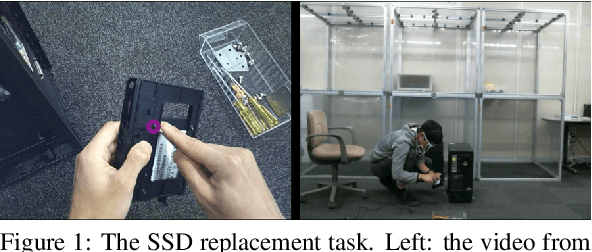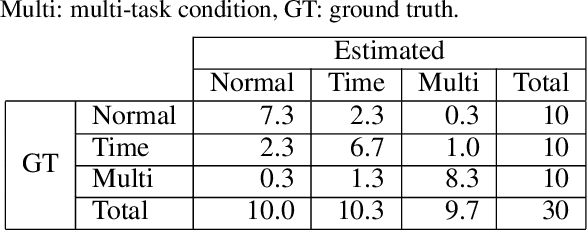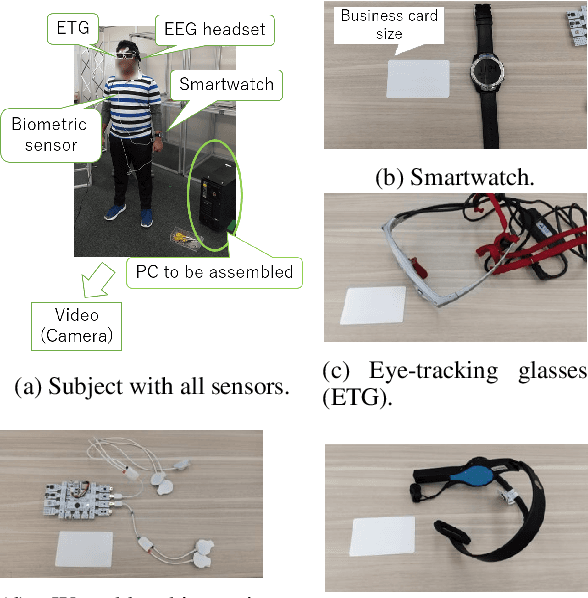Human-error-potential Estimation based on Wearable Biometric Sensors
Paper and Code
Nov 15, 2021



This study tackles on a new problem of estimating human-error potential on a shop floor on the basis of wearable sensors. Unlike existing studies that utilize biometric sensing technology to estimate people's internal state such as fatigue and mental stress, we attempt to estimate the human-error potential in a situation where a target person does not stay calm, which is much more difficult as sensor noise significantly increases. We propose a novel formulation, in which the human-error-potential estimation problem is reduced to a classification problem, and introduce a new method that can be used for solving the classification problem even with noisy sensing data. The key ideas are to model the process of calculating biometric indices probabilistically so that the prior knowledge on the biometric indices can be integrated, and to utilize the features that represent the movement of target persons in combination with biometric features. The experimental analysis showed that our method effectively estimates the human-error potential.
 Add to Chrome
Add to Chrome Add to Firefox
Add to Firefox Add to Edge
Add to Edge